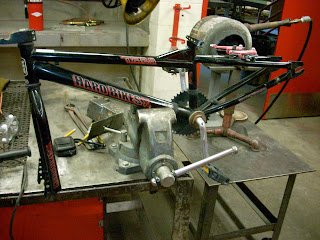It’s hard to know what aspects of these
stories are true and which are apocryphal. There is, however, some evidence that objects like these may have existed. For example, in 1900, off the coast of the Greek island of
Antikythera an object containing a series of 30 or more complex, interlocking
bronze gears was recovered from a shipwreck close to 2,100 years old. Upon
analysis, this mechanism was found to be capable of calculating the position of
the Sun and Moon as well as the Moon’s phases, solar and lunar eclipse cycles
and the motions of planets with the turn of a handle. This raises the idea that these ancient people may have had the technology and the drive to create machines of remarkable complexity, and hints at the plausibility of the fables mentioned above.
An automaton is a complex
machine that functions through entirely mechanical means, and which performs tasks with little or no direct human control. Their complexity has varied over time from small wooden contraptions driven by a crank, the wind, or even steam to extremely sophisticated examples of engineering prowess capable of multiple complicated functions.
Some of the earliest credible accounts of functioning automata come from China and are documented in a set of scrolls called the Shuishi Tujing. This is essentially a list of Chinese inventions compiled in the 6th century by a mechanical engineer named Huang Gun. Described in this account are mechanical wine pourers built onto boats, and a mechanical theater built for the emperor. There was also an interesting chariot built around 2600 BCE. On it was a figure that was connected to the wheels via a set of gears. The gearing would turn the figure to point south no matter the orientation of the chariot.
Some of the earliest credible accounts of functioning automata come from China and are documented in a set of scrolls called the Shuishi Tujing. This is essentially a list of Chinese inventions compiled in the 6th century by a mechanical engineer named Huang Gun. Described in this account are mechanical wine pourers built onto boats, and a mechanical theater built for the emperor. There was also an interesting chariot built around 2600 BCE. On it was a figure that was connected to the wheels via a set of gears. The gearing would turn the figure to point south no matter the orientation of the chariot.
Examples of these mechanisms became more and more widespread as the Common Era progressed. In 16th century Europe, the Prince of Spain fell down a flight of stairs and was mortally injured. Somehow he managed a miraculous full recovery. In response, the king commissioned Juanelo Turriano, a renowned clockmaker at the time, to create a
mechanical likeness of a dead franciscan frier named Diego De Alcala whose ghost he had credited with his son's recovery.
Some of the most complex examples of these automatons date to the late 18th and early 19th century when they became a popular way for clock makers to show off their talents. They were built to do many things including play music and perform magic tricks among others.
This one, for instance, called the Draughtsman-Writer was built by a Swiss mechanist named Henri Maillardet. It was able to perform seven completely separate, exceptionally complicated tasks. It could write three poems and create four drawings all of which resulted from the motion of several slowly rotating cams with a huge number of bumps, notches and valleys cut into them. As they rotated, these cams would transfer motion via a lever-arm to the joints that would create the motion of the automaton's arm.
The craftsman had to work out how each one of those bumps in the cam would translate into the automaton's movement and create the resultant marks on the paper. Then each one of these moving parts had to be crafted with extreme precision by hand and finally laid out in the proper sequence. This was done long before the invention of computer-aided design and laser cutting, and in most cases even before the advent of factory production. Each cog, gear, cam and mechanism had to be laboriously hand-fabricated using files, hand-saws and other tools of the period.
This one, for instance, called the Draughtsman-Writer was built by a Swiss mechanist named Henri Maillardet. It was able to perform seven completely separate, exceptionally complicated tasks. It could write three poems and create four drawings all of which resulted from the motion of several slowly rotating cams with a huge number of bumps, notches and valleys cut into them. As they rotated, these cams would transfer motion via a lever-arm to the joints that would create the motion of the automaton's arm.
The craftsman had to work out how each one of those bumps in the cam would translate into the automaton's movement and create the resultant marks on the paper. Then each one of these moving parts had to be crafted with extreme precision by hand and finally laid out in the proper sequence. This was done long before the invention of computer-aided design and laser cutting, and in most cases even before the advent of factory production. Each cog, gear, cam and mechanism had to be laboriously hand-fabricated using files, hand-saws and other tools of the period.
These artists, engineers, and craftsmen created machines that were able to perform tasks previously confined to the dexterity of the human hand. These mechanisms were built for many reasons. They may have performed a practical function or provided entertainment. They were, in some cases, programmable. Some were even presented as rudimentary imitations of life. In any case, these feats of engineering have not only amazed audiences from history into the modern era; in their time they even spured philosophical discussions about the meaning of life. These machines speak to the uniquely human ability to strain the bounds of our perceived limitations in order to create things that have never been seen before.





















































